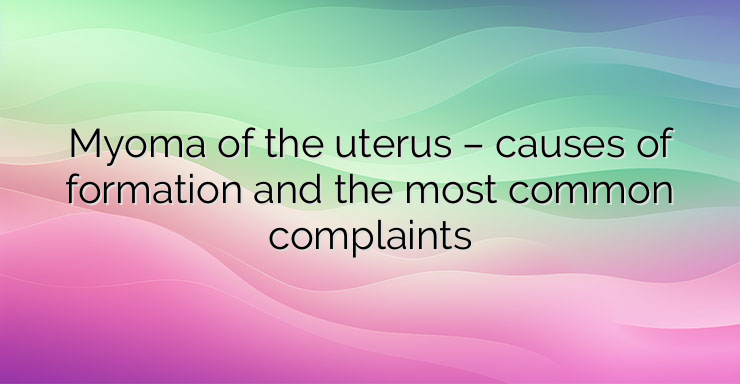Myoma is a benign neoplasm that is found most often in women between the ages of 40-50. The origin of the growths formed is from the smooth muscle layer – myometrium, which forms the uterine wall. Formation of fibroids The reasons that lead to the formation and growth of fibroids are not clearly and fully defined. Hormonal stimulation of estrogens and progesterone is a proven factor associated with their appearance. After reaching menopause and reducing the levels of female sex hormones, it is very common to see a decrease in fibroid nodules. Scientists have identified a number of factors that may influence the formation of fibroid nodes in women, but they are not direct causes of their formation. Age – the advancing age of women increases the risk of formation, since the peak of detection and diagnosis of this condition occurs at the mature age of 40-50 years. Heredity – the percentage risk of developing fibroid nodes in a woman whose mother or sister has been diagnosed increases. Since the main causes of fibroids are the cyclical changes in the endometrium, stimulated by female sex hormones, it is believed that early menarche – the first menstruation in a girl increases the risk of developing fibroid nodes in adulthood. Lifestyle also affects the development of uterine fibroids. The type and quality of food consumed has a significant impact on health. The intake of a larger amount of fruits and vegetables, which contain vitamins of groups B and C, has a beneficial effect. Sport – physical activity is of particular importance. Its beneficial effect is also determined in middle-aged women, in whom the risk of developing uterine fibroids decreases. In women with diagnosed diabetes or arterial hypertension, the risk of developing fibroid nodes increases. The formation and growth of uterine fibroids is a complex mechanism. They are formed as a result of genetic changes, but the woman’s lifestyle is also important. Complaints of women with myoma nodules Myoma is a neoplasm, the localization of which in the uterine cavity is extremely important for determining the symptomatic manifestations. The condition can be asymptomatic and discovered during a regular gynecological examination, or with characteristic symptoms that point to the problem. 1. Complaints related to the female genital system. One of the most common complaints among women is heavy, painful menstruation. The amount of blood released exceeds the normal for the period of menstruation. This complaint is characteristic of women with subserosal and intramural uterine fibroids. In women in whom the myoma formed is submucosal, a characteristic complaint is vaginal bleeding, which is not related to menstruation, and subsequently turns into menstrual bleeding, that is, the duration of bleeding is prolonged.Lower abdominal pain is also a common complaint in women with fibroids. It can be the result of shortening of the uterine muscles due to the presence of a fibroid or in the presence of a fibroid node on the leg as a result of its rotation around its axis. Many women may complain of pain during intercourse. NEWS_MORE_BOX Prolonged and profuse vaginal bleeding can lead to the appearance of anemic symptoms in a woman. Most often, women’s complaints are related to the appearance of palpitations and rapid pulse, pale skin and easy fatigue. 2. Complaints related to the excretory system. The growth of the fibroid is associated with an exit from the boundaries of the uterus, which can lead to compression of neighboring organs. In this case, pressure on the bladder can be reached, leading to urinary retention and frequent urges to urinate. 3. Complaints from the gastrointestinal system. By the same mechanism of the growth of myoma formations, the organs of the gastrointestinal system – departments of the large intestine – can be pressed, which will lead to disturbances in defecation.


Leave a Reply